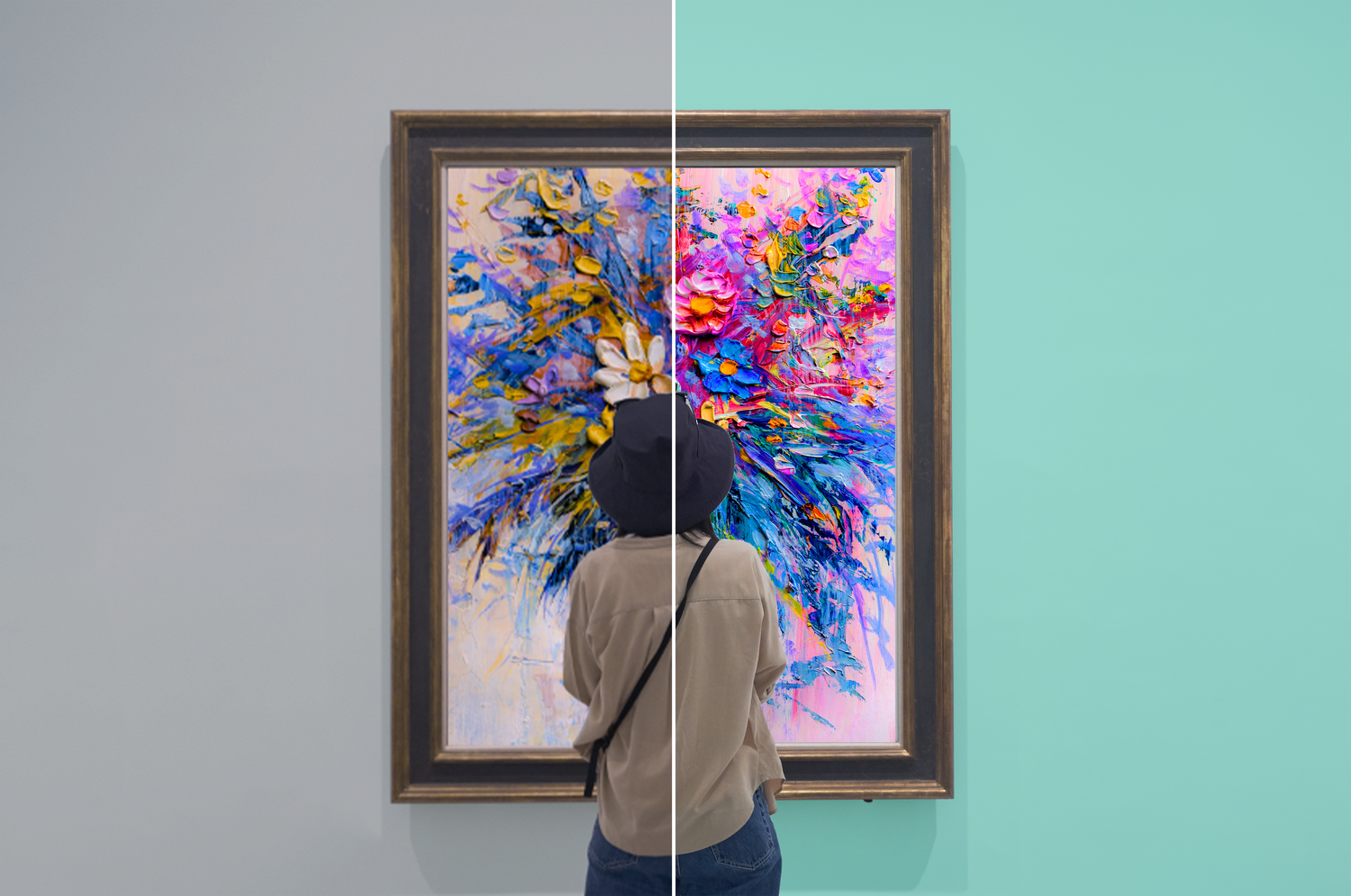Imagine stepping into a museum, where every painting whispers tales from the past, or wandering through a garden where nature's palette unfolds in a symphony of colours. Now, envision experiencing all this with the volume turned down on colour. This is the reality for those with various types of colour blindness, also known as colour vision deficiency (CVD), a condition that can significantly dull the vibrancy of the world around them.
Key Insights from the EnChroma Study
EnChroma's groundbreaking research, involving responses from 505 participants with red-green colour blindness, unveils how this condition diminishes their interest and enjoyment in activities where colour plays a starring role. Nearly half of the respondents relayed that their condition deters them from visiting art museums and similar venues, with a striking 77% feeling excluded or let down during visits to colourful attractions. The desire to create art, differentiate team jerseys at sports events, and navigate colour-coded information at venues also presents a considerable challenge.
A Call for Colour Accessibility
The study not only highlights the hurdles faced by those who are red green colour blind , it also underscores a pressing need for "colour accessibility" in public spaces. Because many venues do not understand what colourblind people see, it is unsurprising that a significant 84% of the study’s participants expressed a desire for venues to consider their needs in colour usage. This includes everything from venue signage, maps and brochures to exhibits. The lack of awareness about what colourblind people see points toward the broader issue of inclusivity.
EnChroma's Mission: Bridging the Colour Gap
EnChroma, renowned for its colour-enhancing glasses for those who are red green colour blind, stands at the forefront of advocating for colour accessibility. The company encourages public institutions to consider the needs of millions of colour blind people when designing and choosing colours for marketing materials, visitor access points, online and in exhibits. These efforts aim to ensure that experiencing art, nature, tourist destinations and cultural events is more accessible to people with all types of colour blindness, regardless of how they see the world.
The Path Forward
The EnChroma study serves as a clarion call to museums, parks, tourist destinations, and other public venues to prioritize colour accessibility. By embracing technologies like EnChroma glasses and adapting signage, guides, and other visual information, we can open up a more inclusive and vibrant world for individuals who are red green colour blind and make their trips to colourful venues less frustrating and more memorable. The findings from EnChroma's study are a stepping stone toward a more inclusive society, where colour is not a barrier to access or enjoyment.
Highlights from the EnChroma Study:
- Almost 8 in 10 colour blind people want museums, parks, gardens and tourist destinations to adapt signage, guides and exhibits for colour blind guests to eliminate problematic colours (77.82%)
- 14% of colour blind people say family and friends do not take them to colourful museums, parks, gardens and tourist destinations because they're colour blind
- 8 in 10 colour blind people say they were made fun of for colouring something "wrong" as a child or adult
- More than half of colour blind people think museums, parks, gardens, tourist destinations, concert and sports venues should treat colour blindness as an accessibility issue (54.06%)
- Eighty-five percent of colour blind people say they would be more likely to visit a museum, garden, park or tourist destination if they knew they could borrow EnChroma glasses to more fully experience the colours during their visit (85.35%)
- Seven in 10 colour blind people want state and national parks to offer scenic viewers adapted for the colour blind with EnChroma lenses (69.90%)
For a more detailed exploration of the result of the EnChroma study, click here. Click here to answer the question ‘how do colourblind glasses work?’ To learn more about types of colour blindness click here. Join us in envisioning a world where colour accessibility is not an afterthought but a key consideration in designing public spaces, making the beauty of colours accessible to everyone.



